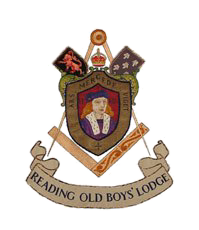To the majority of Freemasons the Volume of the Sacred Law is the Bible. There are many in Freemasonry, however, who are not Christian and to them the Bible is not their sacred book and they will make their promises on the book which is regarded as sacred to their religion. The Bible will always be present in an English lodge but as the organisation welcomes men of many different faiths, it is called the Volume of the Sacred Law. Thus, when the Volume of the Sacred Law is referred to in ceremonies, to a non-Christian it will be the holy book of his religion and to a Christian it will be the Bible.
The meeting is in two parts. As in any association there is a certain amount of administrative procedure - minutes of last meeting, proposing and balloting for new members, discussing and voting on financial matters, election of officers, news and correspondence. Then there are the ceremonies for admitting new Masons and the annual installation of the Master and appointment of officers. The three ceremonies for admitting a new Mason are in two parts - a slight dramatic instruction in the principles and lessons taught in the Craft followed by a lecture in which the candidate's various duties are spelled out.
New members make solemn promises concerning their conduct in Lodge and in society. Each member also promises to keep confidential the traditional methods of proving that he is a Freemason which he would use when visiting a lodge where he is not known. Freemasons do not swear allegiances to each other or to Freemasonry. Freemasons promise to support others in times of need, but only if that support does not conflict with their duties to God, the law, their family or with their responsibilities as a Citizen.
Freemasonry embraces all men who believe in God. Its membership includes Christians, Jews, Hindus, Sikhs, Muslims, Parsees and others. The use of descriptions such as the Great Architect prevents disharmony. The Great Architect is not a specific Masonic god or an attempt to combine all gods into one. Thus, men of differing religions pray together without offence being given to any of them.
Traditionally, Freemasonry under the United Grand Lodge of England has been restricted to men. The early stonemasons were all male, and when Freemasonry was organising, the position of women in society was different from today. If women wish to join Freemasonry, there are two separate Grand Lodges in England restricted to women only.
No. From its earliest days, Freemasonry has been involved in charitable activities. Since its inception, Freemasonry has provided support not only for widows and orphans of Freemasons but also for many others within the community. Whilst some Masonic charities cater specifically but not exclusively for Masons or their dependents, others make significant grants to non- Masonic organisations. On a local level, lodges give substantial support to local causes.
